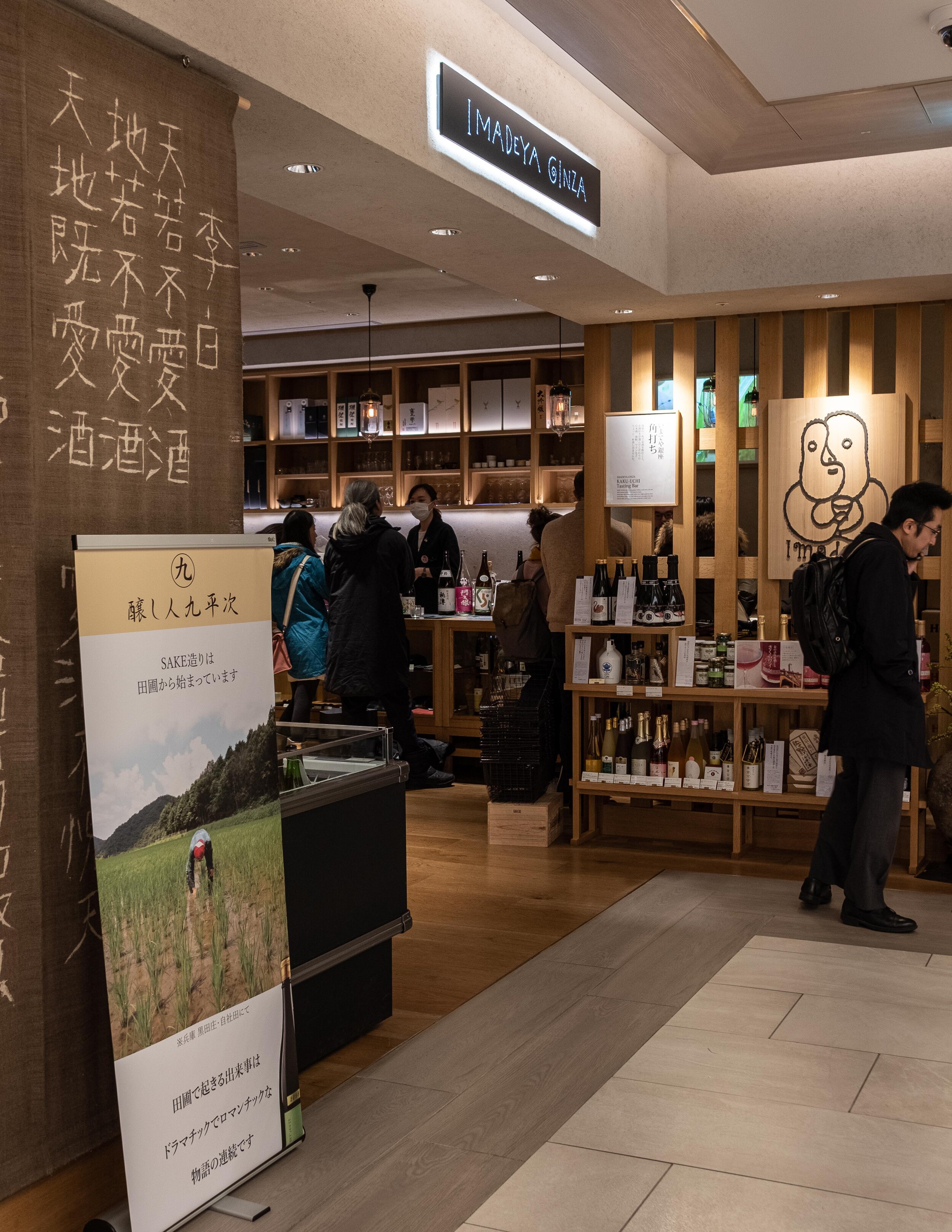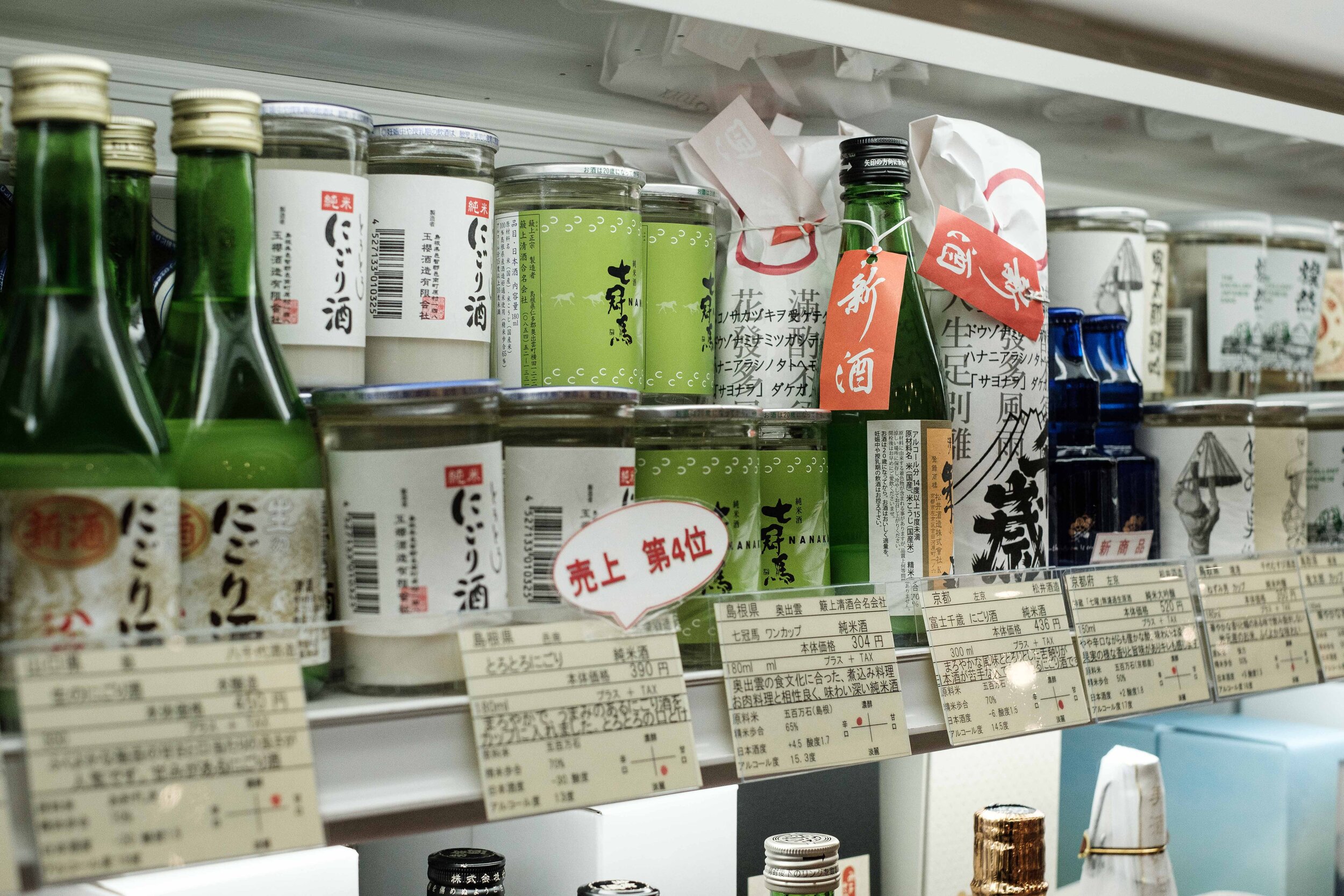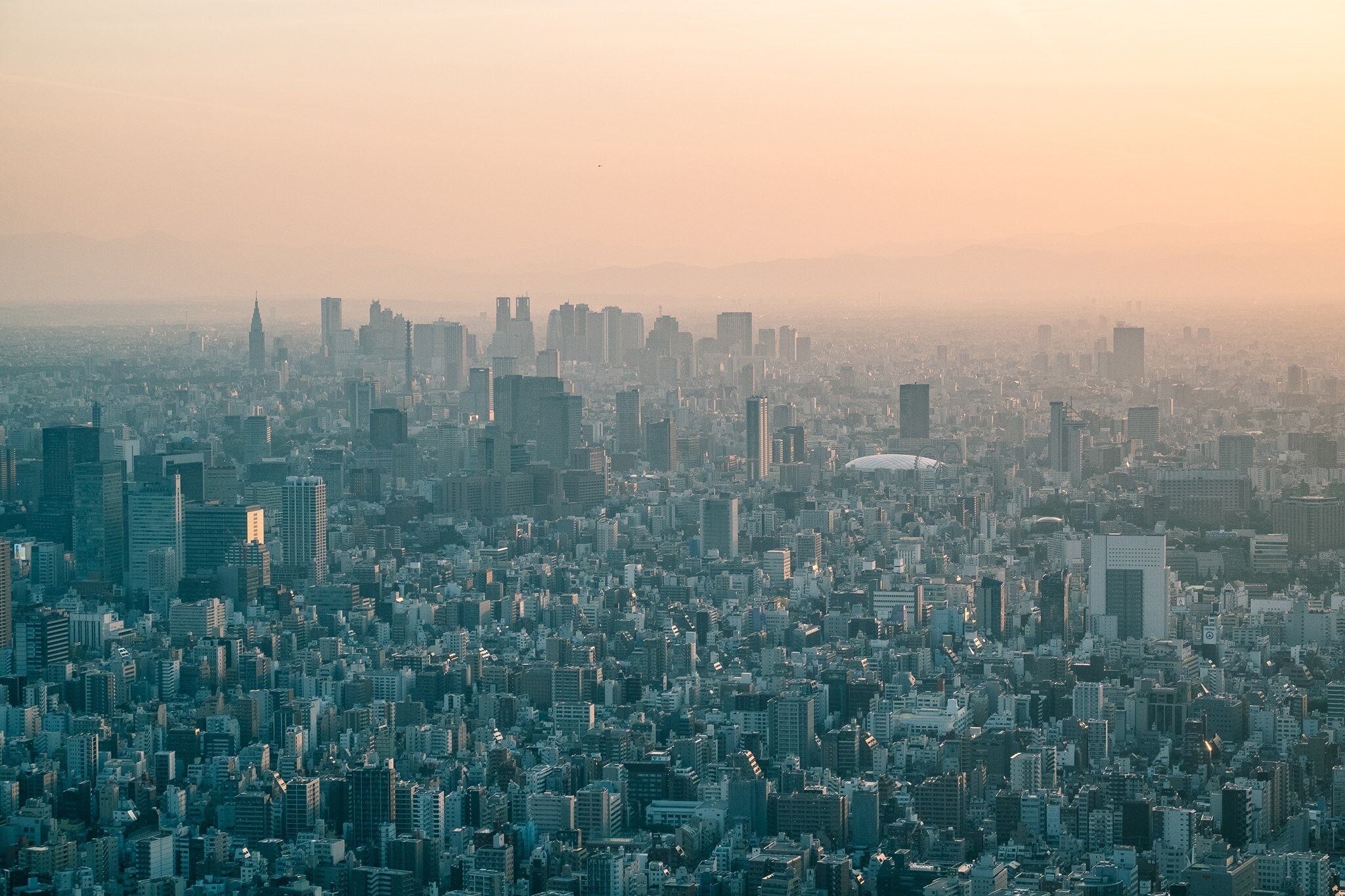Shopping Guide: Tokyo
The Summer Olympics might be postponed, but Tokyo is always worth a visit, especially for sake fans! In this article we would like to introduce a few liquor stores with an exceptionally good selection of sake.
In the second part (coming soon) we will focus on pottery and craft shops where you can buy sake-related goods such as guinomi (sake cups).
Finding your way
Addresses in Tokyo can be a little confusing because most streets have no names. Instead, neighbourhoods and blocks are divided into numbered zones. Copy-pasting an address into a search engine will sometimes mess up the numbers and give you a wrong result, therefore it’s better to use the maps provided here.
We have written addresses with both Latin and Japanese characters so you can ask someone for directions if necessary.
Hand-painted signs announce seasonal specialties at a sake shop in Yokohama.
Sake Shopping
Japan Sake and Shochu Information Center
The JSS Information Center is a good place to start your sake-journey. (Photo courtesy of JSS)
The ”Japan Sake and Shochu Information Center” —short JSS— might sound a bit dry, but behind the grey facade of this inconspicuous building in central Tokyo is a treasure trove of all things sake-related. Plus, there’s sake to try and buy, too!
The center is run by the Japan Sake and Shochu Makers Association, an industry group for the promotion of Japanese sake, shochu and awamori in Japan and the world. Especially in the light of the upcoming Olympics, they have been very actively promoting Japan’s national beverages to non-Japanese-speaking groups. As part of these efforts, they have published a very informative illustrated brochure in English (and many other languages!) that explains the history, basics of production and how to enjoy sake. You can pick it up at the information Center as well as some shops in Tokyo.
They also regularly host tasting sessions in English, usually focusing on one brewery’s lineup presented by the brewery’s president or a representative. If it fits with your schedule, it’s good opportunity to meet fellow sake enthusiasts and learn more about tasting and brewing techniques! Details can be found on the JSS Facebook page.
As you would expect from a place that is run by the breweries themselves, all their staff are very helpful and knowledgeable and will also be able to help you if you want to visit a sake brewery during your trip to Japan. The center also offers a regularly changing selection of sakes for tasting and also two different tasting sets of three glasses each; all for a very reasonable price. What better way to start your trip?
There’s also a selection of bottles to take home, plus loads of info material like a map showing all of the country’s breweries including useful information for visitors, books about sake in Japanese and other languages, plus a few sake cups, tokkuri (sake carafes) and other sake-related goods.
The bright and welcoming main room at the JSS Information Center. (Photo courtesy of JSS)
JSS Information Center 日本の酒情報館
1F, 1-6-15 Nishi-Shinbashi, Minato-ku, Tokyo, 105-0003.
〒105-0003 東京都港区西新橋1-6-15 日本酒造虎ノ門ビル1F
Hours: 10:00–18:00
japansake.or.jp/sake/english
Liquor shops
Most of the shops mentioned here not only sell sake and other beverages but will also have a small selection of otsumami (snacks) like canned seafood, and sake-related foods such as amazake (a very sweet and nutritious non-or low-alcohol drink) and sake kasu (the solids that remain after pressing). It’s also not uncommon for stores to have a small bar where customers can sample a few current offers or just come in for a quick drink on their way from work.
Imadeya
Ginza Six is an upscale mall in the famously expensive Ginza District. But even if you don’t care about luxury clothes and accessories, their basement level is worth a look. It is home to Imadeya, one of the most interesting liquor shops in Tokyo and specialised in high-quality sake.
Imadeya Ginza. The text on the left is from a poem by Chinese poet Li Bai ‘Drinking Alone by Moonlight’.
The refrigerators that line their walls contain about 400 different brands, including rare and special bottlings (plus some shochu and Japanese wine). They are at the forefront of current trends and offer many sakes from breweries that challenge the established norms; terroir-focussed brewers that list the exact rice paddy on the bottle, brands that eschew the traditional classifications like junmai or ginjo in favour of their own system, or high-acid brews that could be mistaken for white wine.
The staff are all very knowledgable — many of them are certified sake sommeliers! Ginza attracts many tourists, and therefore English-speaking staff is usually available, too (and also Chinese, Korean and even Spanish). The in-store tasting bar gives you a chance to try a few samples before you make a purchasing decision, or to have an aperitif before heading out for dinner. Gift-wrapping and domestic/international shipping services are available as well.
Imadeya Ginza いまでや銀座
Ginza Six B2F , 6-10-1 Ginza, Chuo-ku, Tokyo, 104-0061.
〒104-0061 東京都中央区銀座6-10-1 GINZA SIX B2F
Hours: 10:30–20:00
Imaday.jp
Hasegawa in Azabu.
Hasegawa Saketen
Hasegawa is a big player in the Japanese sake market. Their president, Koichi Hasegawa, is also a very influential critic and the company hosts the well-regarded annual Sake Competition that has been going on since 2011.
Their headquarters and main store in Kameido in eastern Tokyo is probably bit out of the way for most tourists, but they run a number of shops in Tokyo. Pictured above is the small but well-stocked store in the Azabu neighbourhood. The area is home to many embassies and also a popular quarter for well-heeled expats, and the shop’s staff are used to inquiries from international customers. The shop inside the Palace Hotel, close to Tokyo Station and the Imperial Palace, always has English-speaking staff available to answer your questions. Other locations include the shopping centres connected to Tokyo Skytree and Tokyo Station respectively, and a large shop in Nihonbashi.
Not to be confused with Liquors Hasegawa, a large liquor shop near Tokyo Station which is mostly known for their selection of whisky.
Hasegawa はせがわ酒店
Palace Hotel B1, 1-1-1 Marunouchi, Chiyoda-ku, Tokyo 100-0005
〒100-0005 東京都千代田区丸の内1-1-1 パレスホテル東京 B1
(English-speaking staff available)
2-1-1 Nihonbashi Hon-cho, Chuo-ku, Tokyo 103-0023
〒103-0023 東京都中央区日本橋本町2-1-1 武田グローバル本社1F
See their website for opening hours and other locations:
hasegawasaketen.com/index_en.html
Kimijimaya in Ginza. (Photo Courtesy of Ginza Kimijimaya)
Kimijimaya
Kimijimaya is another institution in the world of sake retail. The owner Satoshi Kimijima is not only a very active figure in the sake scene, but also the lead singer and guitarist of a rock band. He has good connections with many brewers and not only sells big, well-known brands but also high-quality sake from smaller, local breweries, and even some special bottlings that are only available at their stores. For example, they are the only place in Japan where you can buy the “Phoenix” label, a collaboration between the French rock group of the same name and Yamagata-based brewery Tatenokawa.
While the main store is in a quiet neighbourhood in Yokohama, they also have two locations in Tokyo: one on the northern edge of the Ginza, and another one in the Atré shopping center connected to Ebisu Station. Both stores usually have someone who can speak English. They’re active on social media, too. Check their Instagram feeds for seasonal offers or recommendations.
All shops have a little standing bar where you can sample some sake, wine or shochu together with a few snacks and nibbles. And although it’s not the focus of this site, it should be mentioned that their wine selection is very good, too!
Kimijimaya 君島屋
1-2-1 Ginza, Chuo, Ku, Tokyo 104-0061
〒104-0061 東京都中央区銀座1丁目2-1 紺屋ビル1F
Kimijimaya.co.jp
Marugoto Nippon
This building near Senso-Ji temple in Asakusa holds a range of shops, but we will focus on the supermarket Kura on the ground floor.
Some unusual one-cup sakes at Kura in Marugoto Nippon near Senso-Ji Temple.
Besides offering high-quality regional specialties from all prefectures (perfect for souvenir shopping!), they also have a very interesting sake selection with about 300 different kinds of sake from all over Japan. It’s a good opportunity to discover brands from small and lesser-known breweries. Some sakes are available for tasting. They also offer a large selection of “one-cups” (180ml-sized bottles with a wide mouth). Although the signs are all in Japanese and English-speaking staff is not always available, there’s a helpful small diagram that shows if the sake is sweet or dry, full-bodied or light.
Kura 蔵 まるごとにっぽん
Marugoto Nippon 1F, 2-6-7 Asakusa, Taito-ku, Tokyo, 111-0032
〒111-8535 東京都台東区浅草2-6-7
Marugotonippon.com/kura/
Mitsukoshi’s main store in the Nihonbashi neighborhood, Tokyo.
Department stores
Tokyo’s big department stores have something for every need and taste at every price point from reasonable everyday products to prohibitively expensive luxury items. The most well-regraded names are Isetan, Mitsukoshi and Takashimaya, closely followed by Matsuya. Their main stores in Shinjuku and Nihonbashi respectively are large enough to spend several hours just looking around. But Tōkyō has enough purchasing power (and food-loving citizens) for many more department stores… there’s Tobu, Seibu, Odakyu and Keiyo (all of these companies also operate their own train lines) and a few others that are mostly fashion-centered.
The main layout is roughly the the same for all stores. Their top floors often offer various dining options, another floor functions as a gallery space with changing exhibitions of art and exquisite crafts like lacquerware or Japanese pottery. Many stores will also have a space to hold special events like seasonal or country-themed food fairs etc.
But the best part is hidden away in the basement levels (called “depa-chika”, a contraction of department store and the Japanese word for basement): the food department, where you can buy specialties from all over Japan, delicate pastries and traditional Japanese sweets, international foods and exclusive wines, as well as lunch boxes and various fresh foods. Of course, there’s also a section for Japanese sake. As these stores attract a fair share international tourists, there is a good chance that you will be able to find an English-speaking salesperson, too.
An excellent selection of premium brands and a few more unusual bottles, all kept at perfect temperature at Mitsukoshi Nihonbashi.
As for the selection, they’re usually mostly in a mid-high price range. Nihonbashi Mitsukoshi has a few more interesting bottles in their glass-doored refrigerators and has an extra shelf with small bottles that might be of interest to tourists traveling around. Isetan in Shinjuku stocks some of the more well-known brands. Tokyu Group’s Toyoko department store in Shibuya had one of the first basement-level food department “Tokyu Food Show” and hosts weekly changing sake promotions.
Supermarkets
Going to a regular supermarket in a foreign country can be a fun experience, comparing prices, finding unusual groceries, and discovering interesting new foods. Most Japanese supermarkets have a liquor shelf with beer and beer-like drinks, at least a little bit of wine, and some whisky as well as shochu and sake.
The quality of the selection depends a bit on the shop and the neighborhood. Most run-of-the-mill stores will have some large tetra-packs and 1.8l-bottles of simple sake for daily drinking and for cooking, a few 720ml-bottles from large, well-known brands including one or two kinds of ginjo/daiginjo (fragrant sake made from highly polished grains) for special occasions, and a small selection of one-cups and small cartons for immediate enjoyment.
In the residential areas of Tokyo, most grocery stores and supermarkets are on the small side. These are often small, regional chains or even one-off shops. The large chains’ neighborhood shops like My Basket or Lawson 100 are little more than extended convenience stores and don’t have much interesting to offer. Seijo Ishi, a Tokyo-based group of supermarkets that caters to well-heeled urbanites and also sells imported cheese, chocolate, and other specialties, might be a better option. They are often located in Atré shopping centers, near train stations.
Supermarkets are there to fulfill your daily needs — with big boxes as well as small “one-cups.”
Airport shopping
The sake shelf at the biggest duty-free shop in Haneda Airport’s international terminal contains the usual suspects from big brands and a few novelty bottles.
Already on your way out, but want to get a bottle of sake as a souvenir? Well, you might be better served getting a Japanese whisky or gin instead… the sake selection at Haneda and Narita Airports is rather slim and limited to the big players.
There are some unusual (i.e. kitschy) packaging options like small barrels or geisha-shaped porcelain bottles, and a few premium bottles for high-profile gifts, but otherwise the sake is pretty much the same that you can get at any Asian supermarket in Europe or the US. Gekkeikan, Ozeki, Kikusui…
These are not bad breweries by any means, but probably not the memorable souvenir you’re looking for. So better plan ahead and do your shopping beforehand!
In the second part of this series we will introduce a few places to shop for sake cups and glasses, decanters as well as tin vessels, thermometers and other accessories.
View over the city from Tokyo Skytree.




















